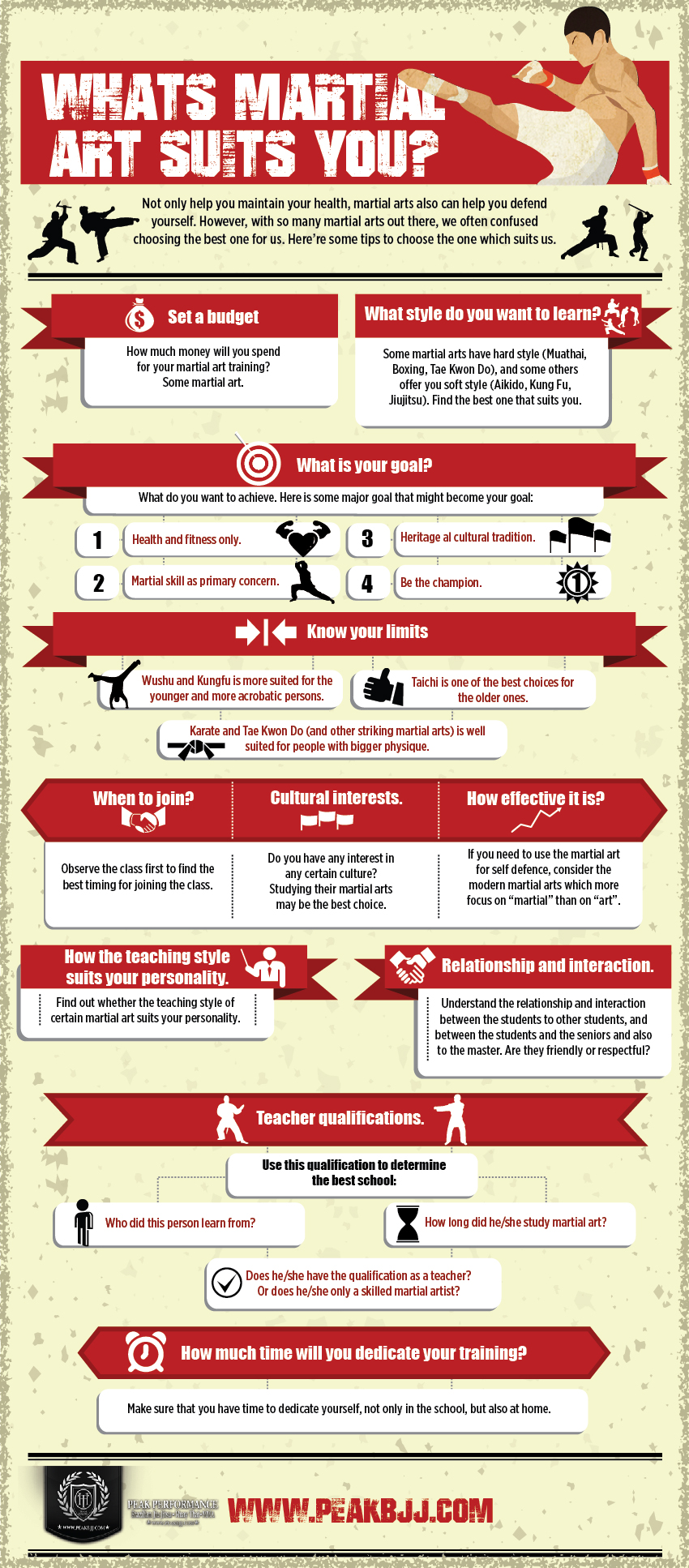In What Means Do Typical Martial Arts Focus On Self-Control Compared To The Competitive Nature Of Contemporary Fight Sports? Uncover The Fundamental Distinctions That Can Affect Your Journey
In What Means Do Typical Martial Arts Focus On Self-Control Compared To The Competitive Nature Of Contemporary Fight Sports? Uncover The Fundamental Distinctions That Can Affect Your Journey
Blog Article
Post Written By- learning karate as an adult
When you consider martial arts, do you lean more towards the conventional techniques or the modern-day battle sports? Each course offers distinct benefits and experiences, formed by their approaches and training methods. Traditional martial arts emphasize personal growth and self-control, while modern fight sports focus on competitors and performance. Comprehending these differences can direct you in choosing the appropriate strategy for your journey. But just how do these distinctions materialize in training and ideology?
The Ideology and Background Behind Conventional Martial arts
While many individuals link martial arts with physical fight, the ideology and history behind traditional martial arts run much deeper. You'll discover that these self-controls highlight personal development, technique, and respect.
Stemming from martial arts to learn at home , traditional martial arts were commonly developed for Self-Defense and spiritual advancement. They symbolize principles such as balance, consistency, and self-discipline, leading professionals beyond mere fighting skills.
As you train, you'll not just learn techniques however also obtain insights into the society and worths that shaped these arts. The routines and practices, commonly passed down through generations, promote a feeling of community and belonging.
The Affordable Nature of Modern Fight Sports
Modern battle sports have changed the landscape of martial arts right into an extremely competitive arena, where athletes face off in a test of ability, approach, and endurance.
You'll discover that competitors are commonly organized with strict policies and policies, making sure fair game and security. These events draw in huge audiences, sustaining the exhilaration and intensity of competitions.
Athletes train carefully, not just for physical prowess but additionally for psychological toughness, knowing that every information counts in the ring. The adrenaline rush during competitions is apparent, as competitors press their limits to declare triumph.
Fans appreciate the athleticism and artistry included, making contemporary combat sporting activities a thrilling spectacle that remains to progress and astound lovers around the globe.
Training Approaches and Strategies: A Relative Analysis
The competitive ambience of modern combat sporting activities needs cutting-edge training approaches that vary significantly from traditional martial arts.
In modern training, you'll focus on specific strategies, sparring, and conditioning, commonly using drills that simulate real fight situations. You'll see a focus on quantifiable efficiency and constant competitors to analyze your skills.
On the other hand, standard martial arts focus on types, katas, and thoughtful trainings, commonly stressing self-control and regard over competitors.
Training is usually less intense and may involve repetitive practice instead of real-time sparring.
While both techniques construct skill and fitness, modern battle sports supply an extra dynamic and adaptable training setting, preparing you for instant challenges in the ring or cage.
Choose the path that straightens with your objectives and interests.
Final thought
In selecting between traditional martial arts and contemporary combat sporting activities, it actually comes down to what you value most. If you're searching for personal growth, self-control, and a feeling of community, typical arts may be your finest fit. Yet if you prosper on competition and real-time difficulties, modern-day battle sporting activities could be the means to go. Ultimately, both courses provide unique advantages, so it's everything about straightening your training with your personal goals and rate of interests.
